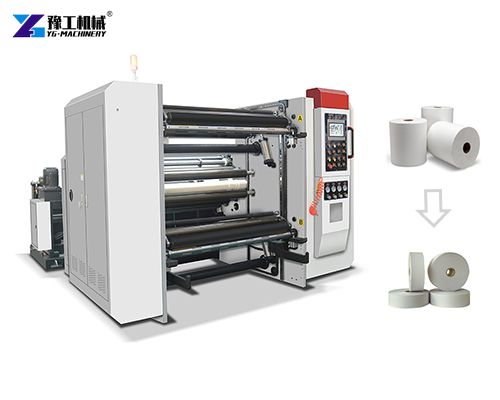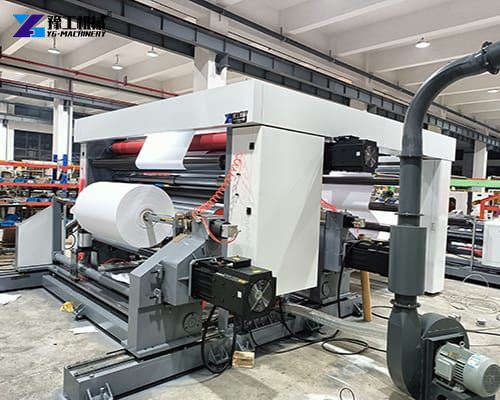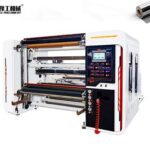Paper slitting and rewinding machine performs two primary functions. First, it slits or cuts a large width of material, known as a master roll or jumbo roll, into multiple narrower strips of specific widths. Second, it rewinds these slit strips onto individual cores, creating new, smaller rolls that are tidy, tightly wound, and ready for the next stage of production or for direct use on high-speed packaging and printing machinery. Most materials are produced in enormous quantities for economic efficiency, but end users require specific sizes and lengths. The slitter rewinder bridges this gap, enabling customization and functionality.
Features of Paper Slitting and Rewinding Machines
Modern paper slitting and rewinding machines are designed with advanced features that enhance productivity and operational ease:
- Automatic Tension Control: Ensures consistent quality and prevents deformation.
- Servo Motor Drive: Provides smooth operation and precise synchronization.
- Touchscreen Interface: Simplifies parameter setting and real-time monitoring.
- Automatic Blade Positioning: Reduces setup time and improves accuracy.
- Dual Rewinding Shafts: Allows simultaneous rewinding of multiple rolls for higher efficiency.
- Web Guide System: Keeps the material aligned during operation.
- Compact and Modular Design: Saves space and facilitates easy maintenance.
Structure and Components
A modern paper slitting and rewinding machine consists of several key components that work together to achieve smooth and accurate operation:
- Unwinding Unit
This is where the large parent roll is mounted. It features pneumatic shafts, hydraulic lifting systems, and tension control mechanisms to ensure stable feeding of material during slitting. - Slitting Section
The heart of the machine is equipped with rotary or razor blades that cut the paper into multiple narrower rolls. The blade type and positioning can be adjusted based on the material type and thickness. - Rewinding Unit
The slit paper strips are rewound onto new paper cores. The rewinding tension and speed are controlled to produce rolls with uniform tightness and alignment. - Tension Control System
Automatic tension control maintains consistent web tension from unwinding to rewinding, preventing wrinkles, stretching, or breakage. - Control Panel
A touchscreen interface allows operators to monitor parameters such as speed, tension, blade positioning, and roll diameter. Modern systems often use PLC or inverter controls for smart automation. - Waste Removal System
Edge trims and scraps are efficiently removed by suction or blowing devices, keeping the workspace clean and minimizing waste.
Working Principle
The working process of a paper slitting and rewinding machine can be summarized in four steps:
- Unwinding:
The jumbo paper roll is placed on the unwinding shaft. Tension control ensures smooth feeding of the material. - Slitting:
The paper passes through the slitting blades, which precisely cut it into narrower strips according to the set width. - Rewinding:
The slit strips are rewound onto individual cores. The rewinding torque adjusts automatically to maintain even tightness across all rolls.
How to Choose Paper Slitting and Rewinding Machine?
Selecting the right model requires careful consideration of several factors:
- Material Type And Thickness
Determine whether you will process paper, film, foil, or composite materials. Machines designed for heavier materials require stronger unwinding and rewinding systems. - Roll Width And Diameter
Choose a model that can handle your maximum parent roll size and desired finished roll dimensions. - Slitting Speed
Higher production volumes demand faster machines with stable tension systems.




